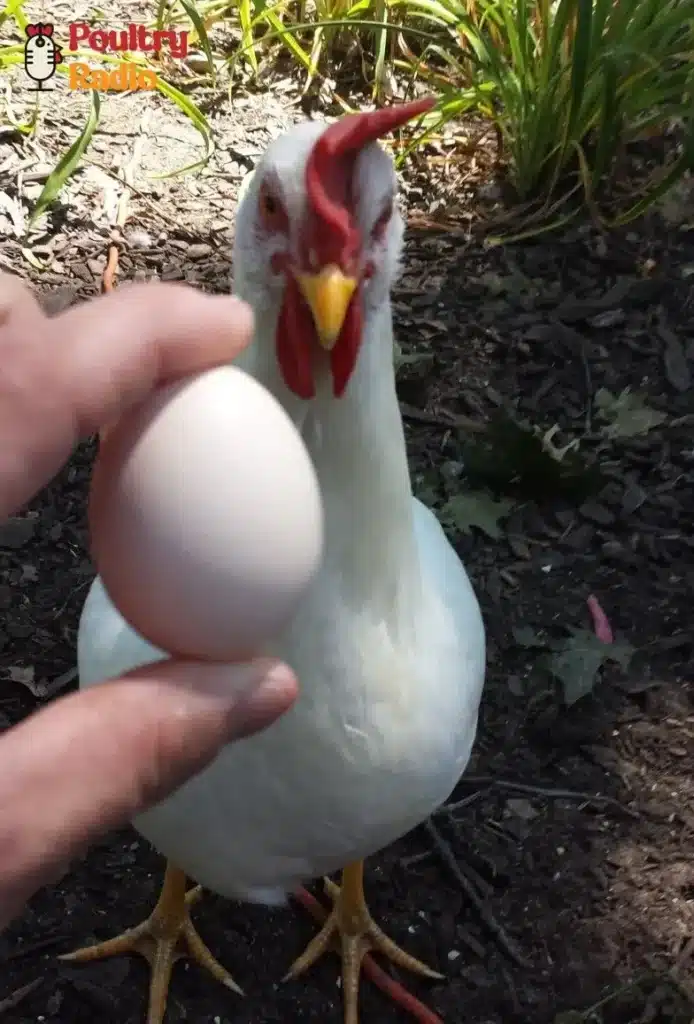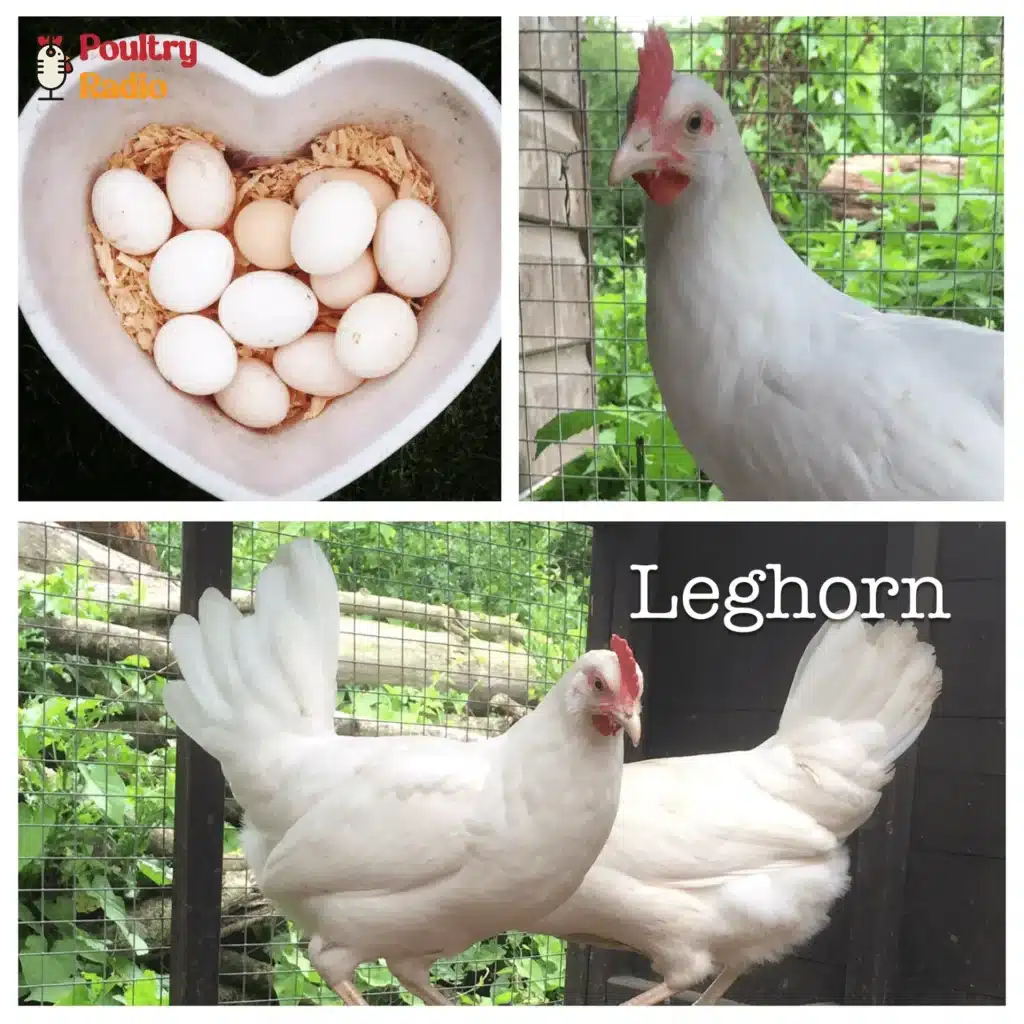White Leghorn Chicken: A Complete Guide
The White Leghorn chicken breed stands as a testament to the excellence of poultry farming. Known for its unique appearance and impressive egg-laying capabilities, these chickens have become a popular choice among poultry keepers. In this comprehensive guide, we will explore the various aspects of White Leghorns, answering key questions and shedding light on their unique characteristics.

Understanding the Origin, History and Classification
The story of White Leghorns begins in the early 1800s in Italy, where their ancestors were initially bred for their egg-laying prowess. The selective breeding process aimed at enhancing their ability to lay consistently and produce a high quantity of eggs. Over time, these efforts resulted in the development of the White Leghorn breed, known for its exceptional productivity.
As the poultry industry expanded globally, White Leghorns gained popularity for their efficiency and adaptability. They became integral to egg production operations, showcasing their resilience in various climates and farming conditions. Understanding the historical roots of White Leghorns provides valuable insights into the breed’s purposeful development and its journey to becoming a poultry icon.
| Type | Standard, Bantam |
| Temperament | Noisy & Intelligent |
| Child friendly | Not usually, but with socialization and training, can accept being held |
| Heat Hardiness | Yes |
| Beginner Friendly | No |
| Egg Color | White |
| Eggs per year | 280-320 |
| Egg Size | Large to Extra Large |
| Lifespan | 5-7 years |
| Cost of Chicken | Male: $2-3.5 Female: $4-6 |
Recognizing the Distinctive Appearance
It is impossible to talk about White Leghorns without mentioning their unique appearance. These chickens have a physically fit sleek form and a clean, elegant appearance due to their mostly white plumage. Their bright red wattles and combs give a splash of color and enhance the breed’s overall good looks.

White Leghorns are upright and thin birds, and this is not only for show; it also reflects their alert and energetic nature. Their agility is enhanced by their unique features, which also help them to be skilled flyers and foragers. Understanding the physical characteristics of White Leghorns and why they are unique in the poultry farming industry requires an appreciation of their distinctive appearance.
In the upcoming sections, we will delve deeper into various aspects of White Leghorns, from their temperament to egg-laying capabilities, unraveling the layers of excellence that make them a pinnacle in the world of poultry.
The Index of Friendliness
White Leghorns, known for their energetic and alert demeanor, often prompt the question: Are they friendly? Let’s explore the myths surrounding the friendliness of White Leghorn chickens and discover practical tips for fostering a strong bond with these lively feathered companions.
Debunking Myths: Are White Leghorn Chickens Friendly?
Contrary to popular belief, Leghorn Chickens can indeed be friendly and sociable members of your flock. While they may not exhibit the same level of overt affection as some other breeds, their intelligence and curiosity make them adaptable to human interaction. The myth that White Leghorns are standoffish or unfriendly is rooted in misconceptions.
Understanding the breed’s natural instincts and tendencies is crucial in dispelling these myths. White Leghorns are inherently curious and active, traits that contribute to their reputation as alert and sometimes independent birds. If you spend lots of time with the chicks, they’ll grow more friendly towards people but don’t anticipate turning them into lap chickens.


Tips for Building a Bond with Your White Leghorn chicks
Building a bond with White Leghorn Chickens involves creating an environment that nurtures trust and positive interaction. Here are some practical tips to enhance the friendliness quotient of your White Leghorn Chicken flock:
1. Early Socialization
Start interacting with White Leghorn chicks early on to familiarize them with human presence. This early socialization lays the foundation for a more positive relationship as they grow.
2. Gentle Handling
Approach your White Leghorn chicks calmly and handle them gently. Be mindful of sudden movements or loud noises that could surprise them. Gradual and calm interactions help build trust over time.
3. Treats and Rewards
Use treats as a means of positive reinforcement. Offering treats by hand encourages the chickens to associate your presence with something positive, fostering a more amicable relationship.
4. Consistent Routine
Establishing a consistent daily routine helps White Leghorn chicks feel secure. Chickens thrive on routine, and a predictable environment can reduce stress, making them more receptive to interaction.
5. Respect Individual Personalities
Like any group of animals, individual White Leghorns may have different personalities. Some may be naturally more outgoing, while others may be more reserved. Respect their uniqueness and adapt your approach accordingly.
By implementing these tips and understanding the nuances of White Leghorn hen behavior, you can cultivate a friendly and harmonious relationship with these intelligent and lively birds. In the next section, we’ll explore the extraordinary egg-laying abilities that make White Leghorns a prized addition to any poultry endeavor.
Hardiness
Coming from Italy equips them to thrive in hot conditions. Their sizable combs effectively regulate their body temperature, keeping them comfortable. However, in colder regions, they are more susceptible to frostbite. By addressing this concern, they can manage well during the winter months.
Extraordinary Egg Laying Abilities
White Leghorns have earned their place as egg-laying champions in the poultry world. Their exceptional egg-laying abilities make them a favorite among those seeking a consistent and abundant egg supply. Leghorn hen lay a clean white egg without any other coloration.
The prolific egg laying capacity of White Leghorns is a key factor in their popularity among poultry keepers. On average, a healthy White Leghorn hen can lay an impressive 280 to 320 large white eggs annually. This equates to 5 or 6 eggs per week; she’s a real egg powerhouse!
They are known for laying well into their third or fourth year as well. She lays white-shelled eggs, each weighing around 55g (2 ounces). The eggs gradually increase in size as she grows older, starting as large and possibly becoming extra-large by the end of her laying cycle.

If you’re thinking of hatching chicks, keep in mind that Leghorns are bred for laying, not brooding. It’s unusual for them to go broody and they typically don’t make good mothers, so you might need to use an incubator if you want to raise chicks.
Dive deeper: Top 10 egg-laying breeds
Are White Leghorn Raised for Meat?
While White Leghorns are well known for their exceptional egg laying abilities, they are not typically raised primarily for meat production. This is because they are slender (slim) build and smaller size makes them less ideal for meat compared to breeds specifically developed for optimal meat yield, such as dual-purpose or meat-focused breeds.
Throughout history, the primary focus for White Leghorns has been on their efficient egg production, a trait that has been carefully bred and improved over time. However, it’s worth noting that White Leghorn meat is not without its merits. Some backyard keepers may opt to use surplus roosters (Male) or non-laying hens for meat, recognizing that their lean meat is flavorful.
Note: Breeds such as Rhode Island Reds or Plymouth Rocks are considered dual-purpose, as they are well-suited for both egg production and meat. While they may not match the prolific egg-laying capacity of White Leghorns, they offer a balanced compromise between eggs and meat.
Health Issues
The Leghorn hen is typically lively and sturdy, with few common health concerns.
During winter, taking care to protect their large, floppy combs may require using Vaseline to prevent frostbite. Alternatively, consider raising the rose comb varieties.
Suggestions for growing White Leghorn Chicken
Space should be your top priority with these birds. They’re clever and inquisitive, so they need to have the opportunity to explore daily to prevent boredom. Providing toys, multi-height perches, and piles of leaves can help keep them entertained, and daily foraging will help prevent aggression and stress-related plucking.
In addition, these birds are skilled flyers, so you’ll need to work hard to prevent them from flying over fences or roosting in trees. They can easily clear 6-foot-tall fences, and some owners have reported that they can even get over 10-foot ones. If you plan to keep them in a coop or enclosed area, it’s essential to have a roof over the space.
Lastly, it’s important to note that these birds are noisy. They are best suited for non-urban environments, as close neighbors will hear them.
Is Leghorn the Right Choice for You?
If you’re looking for a chicken breed that is affectionate and sociable, the Leghorn is generally not the best choice. While some owners may describe their pet Leghorn as affectionate and very friendly, the majority are not.
Having evolved from feral landrace birds, Leghorns have retained some of that independent nature.
However, if you’re seeking a hen that consistently lays a high volume of eggs and has a low feed intake, then the Leghorn is ideal for you! They have one of the best feed-to-egg ratios, especially when allowed to free-range.
Due to their tendency to be nervous, skittish, or reserved, it’s advisable not to leave small children unsupervised around Leghorns.
Note: Silkies are the great kids choice
Conclusion
As we wrap up our exploration of the world of White Leghorns, it’s clear that these chickens possess a unique blend of qualities that have positioned them as pinnacles of poultry excellence.
White Leghorns reign supreme in their egg-laying prowess, churning out an impressive 280 to 320 large white eggs each year. This remarkable egg production places them among the top contenders in the poultry world.
Moreover, their adaptability and robustness make them resilient in various environments, empowering poultry enthusiasts to raise White Leghorns with confidence. Whether you’re a newbie in poultry keeping or a seasoned farmer, the attributes of White Leghorns align with the goals of efficiency, productivity, and sustainability in poultry endeavors.
By choosing White Leghorn Chickens, poultry keepers opt for a breed that not only fulfills the practical needs of egg production but also brings an air of elegance to the poultry yard. As you venture into poultry farming, consider the advantages of White Leghorns and how they can elevate your flock to new levels of excellence.
Commonly Asked Questions
Are Leghorn chickens friendly?

This breed is not particularly friendly, but it is not aggressive either. Chicks that are raised and acclimated to handling will tolerate being held, although they do not seek out affection from people and won’t cuddle their owners.
When should Leghorns start laying?
You can look forward to them starting to lay eggs between 4 and 1/2 to 5 months old. Many of the white-shell eggs available at the supermarket come from Leghorn hens.
Do all Leghorns lay white eggs?
Leghorn chickens are available in a range of lovely colors, including white, brown, and buff. All Leghorns lay clean white eggs.
How many eggs do Leghorns lay a week?
On average, a healthy White Leghorn hen can lay an impressive 280 to 320 large white eggs annually. This equates to 5 or 6 eggs per week; she’s a real egg powerhouse!
Are white leghorn chicken cold-hardy?
Actually, as a Mediterranean breed, they tend to thrive in warmer weather. Single-comb varieties may struggle more compared to rose combs. However, both types are likely to be vulnerable to frostbite.
Are Leghorns broody?
White Leghorn hens are fantastic egg layers and usually don’t go broody. If you’re looking to hatch white leghorn chicks from eggs, you’ll need to use an incubator or ask a brooding hen of a different breed to help out.








